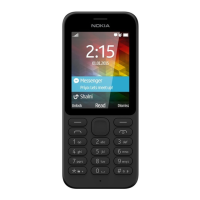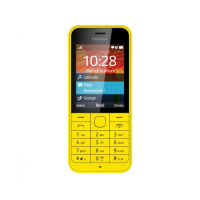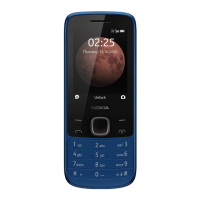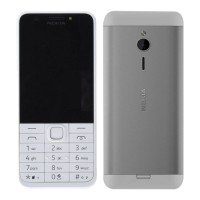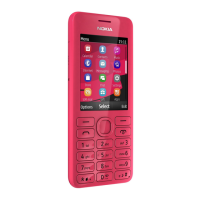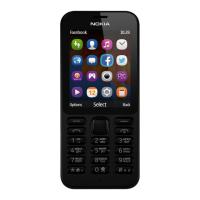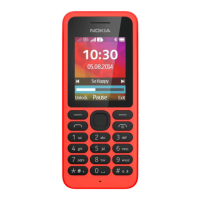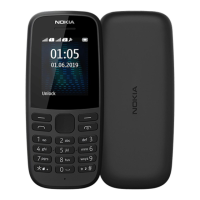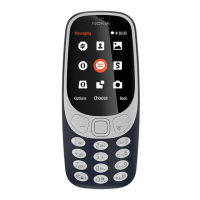
Do you have a question about the Nokia 216 Dual SIM and is the answer not in the manual?
| Display type | LCD |
|---|---|
| Pixel density | 167 ppi |
| Display diagonal | 2.4 \ |
| Display resolution | 320 x 240 pixels |
| Type | - |
| Product color | Grey, White |
| Built-in flashlight | Yes |
| Data network | GPRS, GSM |
| SIM card type | MiniSIM |
| SIM card capability | Dual SIM |
| 2G bands (primary SIM) | 900, 1800 MHz |
| Mobile network generation | 2G |
| RAM capacity | 16 MB |
| Compatible memory cards | MicroSD (TransFlash) |
| Maximum memory card size | 32 GB |
| Flash type | LED |
| Digital zoom | 2 x |
| Rear camera resolution (numeric) | 0.3 MP |
| Form factor | Bar |
| Phonebook capacity | 2000 entries |
| Personal info management (PIM) | Alarm clock, Calculator, Calendar |
| Bluetooth version | 3.0+HS |
| Bluetooth profiles | A2DP, HFP, HSP, OPP, PBAP |
| USB connector type | Micro-USB |
| Headphone connectivity | 3.5 mm |
| Multimedia Messaging Service (MMS) | Multimedia Messaging Service (MMS) is a standard way to send messages that include multimedia content to and from a mobile phone over a cellular network |
| Video playback speed | 25 fps |
| Video capturing speed | 15 fps |
| Video compression formats | MP4, MPEG4 |
| Speakers | Mono |
| Ringer type | MP3 |
| Audio formats supported | AAC, AMR, MIDI, MP3 |
| Talk time (2G) | 18 h |
| Battery voltage | 3.7 V |
| Battery capacity | 1020 mAh |
| Standby time (2G) | 576 h |
| Standby time (3G) | - h |
| Continuous audio playback time | 47 h |
| Subscription type | No subscription |
| Harmonized System (HS) code | 85171400 |
| Depth | 13.5 mm |
|---|---|
| Width | 50.2 mm |
| Height | 118 mm |
| Weight | 82.6 g |
Guidelines for switching off the device in restricted areas like aircraft and hospitals.
Emphasis on obeying local laws and keeping hands free while driving for road safety.
Advice to prevent hearing damage by avoiding high volume levels for long periods.
Information on device compliance with RF exposure guidelines and where to find SAR values.
Overview and identification of the phone's keys and physical parts with a diagram.
Guidance on using standard SIM cards and warnings about incompatible types.
Instructions for using approved memory cards and warnings about incompatible ones.
Steps for charging the phone's battery using a wall outlet or USB.
Covers typing letters, spaces, punctuation, character cases, and numbers.
Instructions on how to initiate, answer, and end phone calls.
Steps for creating, sending, and receiving text messages on the phone.
Instructions on how to turn on the camera, zoom, take photos, and use the flash.
Steps to switch to video mode, start, and stop recording videos.
Steps to delete messages, contacts, and call logs to remove personal information.
Explanation of PIN, PIN2, PUK, and PUK2 codes for SIM card security and unblocking.
Information on setting and using the security code to protect the phone from unauthorized use.
Procedure for making emergency calls, including preparation and important considerations.
Details about the original battery and charger, and compatibility with the device.
Essential safety guidelines for using and handling the battery and charger.
Recommendations for safe use of the device near implanted medical devices.
Instructions to switch off the device in potentially explosive environments like petrol stations.

